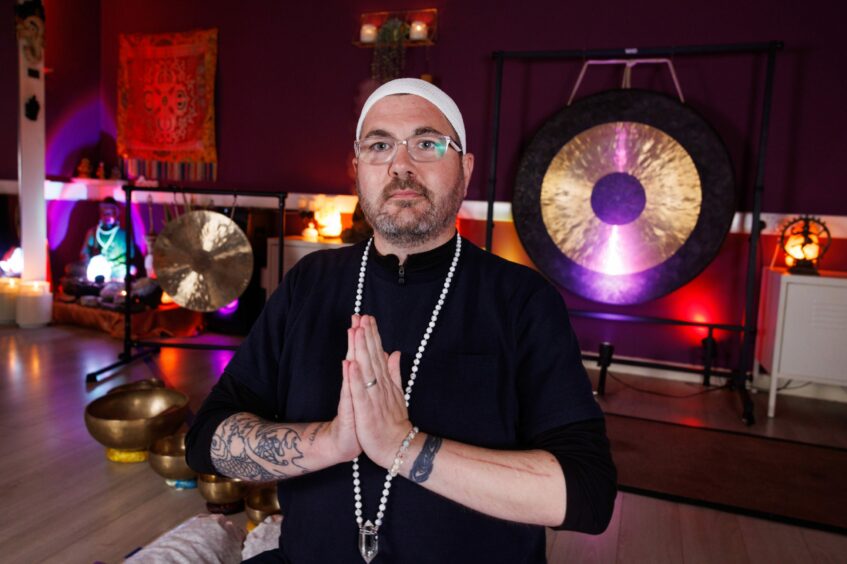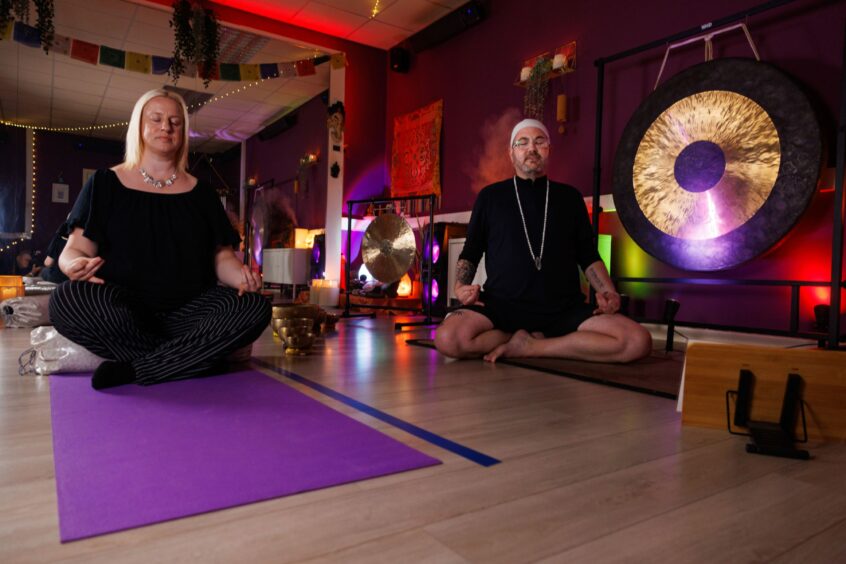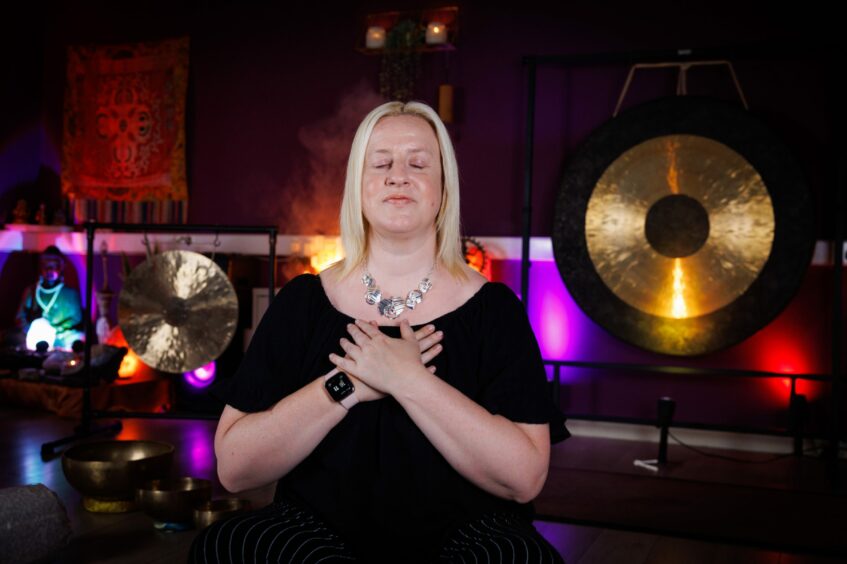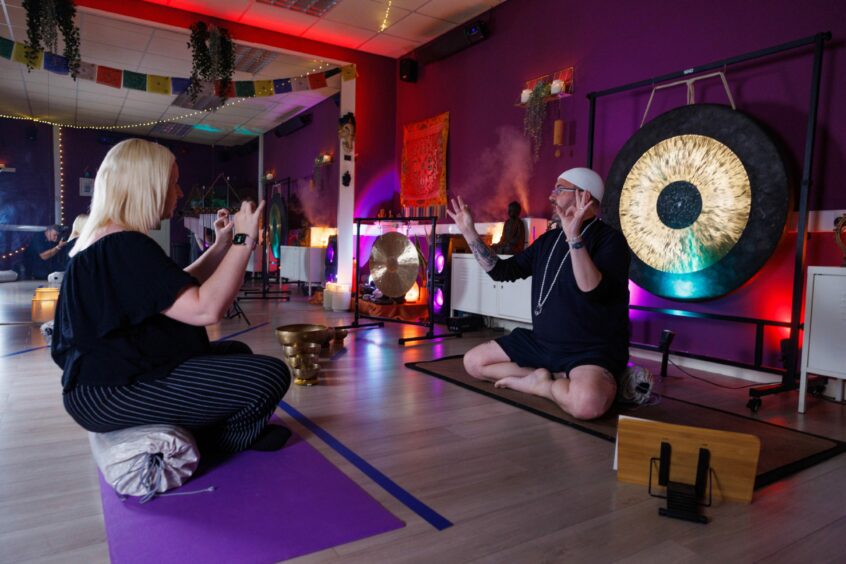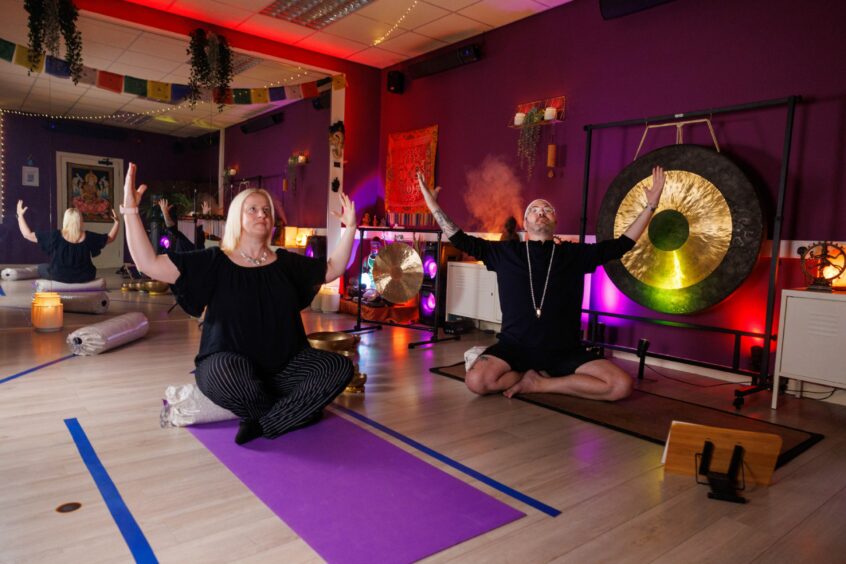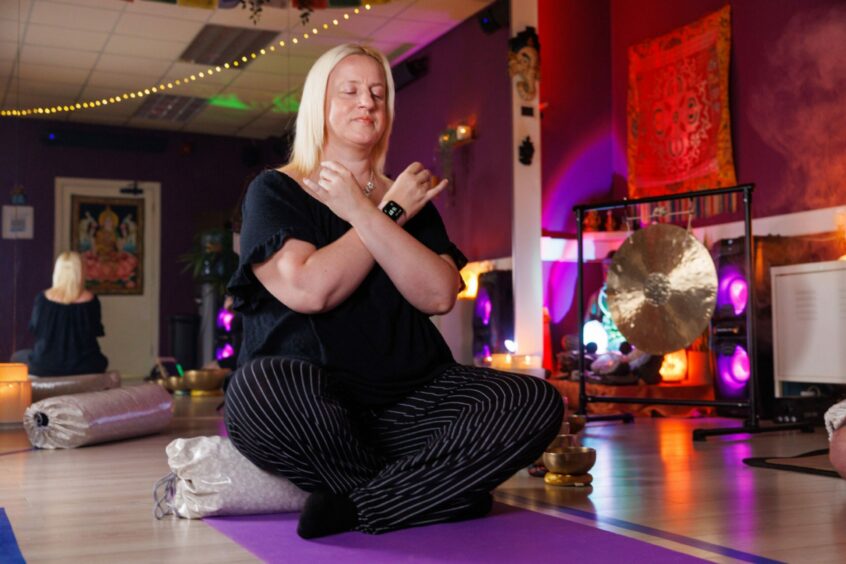
As I closed my eyes I pictured myself sitting in a garden on a summer’s day, listening to the soft sound of bird-song and feeling a gentle breeze as the warm sun shone on my face.
Focusing on my breath, I allowed myself to drift away, relax in the moment and forget about the stresses of the day.
This was my first experience of meditation.
I have heard people speak about the benefits of the daily practice.
And I had read it is favoured by celebrities like US actor Tom Hanks and American singer-songwriter Lady Gaga.
At the Centre for Positive Change in Kirkcaldy’s Mitchelston Industrial Estate, its founder, yoga and spiritual teacher Scott Hutchison-McDade, leads free weekly meditation sessions.
I was intrigued to find out if it was something I would like and if it could help me to relax and unwind after a busy day at work.
So I headed off to the wellbeing centre to find out.
What is meditation?
Meditation has been described as the practice of focussed concentration and clearing your mind using physical and mental techniques.
You usually do it with your eyes closed as you concentrate on your breathing, listen to a particular sound or recite a mantra.
This can be done for as little as two minutes – which is recommended to start with – before building up to 10 or 15 minutes at a time.
What should I expect from a session of meditation?
Before the class began, I sat down with Scott Hutchison-McDade who has been teaching the practice for the past eight years.
He revealed what I could expect: “Meditation is truly magical,” he said.
“It begins with a little breath practice, just for four or five minutes to help regulate the nervous system.
“Then we use a mantra [a word or phrase that is often repeated in meditation] using movement with our fingers.
“You can stay with your eyes closed the whole time or you can have your eyes open.
“For meditation we can sit, stand, lie or walk if you aren’t able to do it seated.
“You will feel calm and a sense of connection to yourself and to the universe.
“And it’s a feeling you don’t get anywhere else, apart from when you are doing meditation.”
Allowing the mind and body to relax
Scott said the practice helps your mind and body to unwind.
“A by-product of meditation is relaxation,” he explained.
“Meditation helps us to tune into how we are really feeling and how our body is feeling.
“It is a practice which can take a long time to develop because we have to accept that our mind wanders – it is never empty.
“But it’s about trying to always bring your mind back to the present moment and embracing that feeling of calmness.”
What happened during the meditation session?
Walking into the studio I instantly felt a sense of calm. It was like stepping into a little urban sanctuary which was warm and bathed in a purple, red and pink glow.
I sat cross-legged directly in front of Scott on a bolster and purple yoga mat so I could follow his lead.
Behind me and at either side of me there were around a dozen class participants of varying ages who had also come along for the half-hour meditation.
For the first ten minutes, Scott took us through a series of breathing exercises as soft music played in the background.
It began with some gentle inhaling and exhaling with Scott inviting us to close our eyes as we relaxed.
He then took us through a physical and mental check in.
“How do you feel mentally right now?” he asked.
In a soothing voice, he continued: “Is your mind racing 100 miles a minute? Is it calm and steady?
“Do you feel anxious, happy? Sad? Indifferent? How do you feel mentally right now?
Still keeping our eyes closed we went on to do some alternate nostril breathing – this involves breathing gently through one nostril, while keeping the other shut with your fingers.
This type of breathing exercise is meant to ease stress and anxiety.
Relaxing during meditation mantra
The meditation mantra was one of the most interesting parts of the session.
Scott invited us to recite a 10-minute Sat Nam mantra – which we did with finger movement, using both hands at the same time.
The mantra was: Sa Ta Na Ma.
When we said each word, we tapped our thumbs with each finger on our hands.
I found this to be very therapeutic and relaxing and I could feel the tension leaving my body the more times I recited it.
When I asked Scott what the mantra meant afterwards, he told me it represents the cyclical nature of life: Sa — birth, beginning and the totality of the cosmos, Ta — life, existence and creativity manifest, Na — death and transformation and Ma — rebirth, regeneration.
Relaxing during mini sound bath / sound healing
The mini sound bath/sound healing was hands-down my favourite part.
This happened in the last section of the class.
For this we were invited to lie down on our mats, close our eyes and relax while listening to the sounds Scott created using a large gong, singing bowls, Koshi chimes and wind chimes.
Gong sound therapy has been practiced for thousands of years.
Practitioners believe that gong ‘baths’ – as they are known – can help to reduce stress and release emotional blockages.
When Scott hit the large gong, it sounded like a train travelling through a tunnel. It was fairly loud, but strangely, it put you at ease.
He then went on to walk through the studio, weaving his way across the bodies spread out on the floor, with what sounded like wind chimes.
As he did this, I could feel myself visualising being in a garden on a summer’s day.
The sounds had an amazing soothing effect of just making you feel very calm and at this point I could feel my mind drifting away.
It was then that I truly felt relaxed and I didn’t want it to end.
I read that immersing yourself in sound is also meant to be healing – I would say it certainly felt good for the soul.
As the sound bath stopped, we were slowly invited to move back into a seated position, re-opening our eyes as the session ended.
What are the health and wellbeing benefits?
As well as helping to increase self-awareness and enhance concentration, according to the NHS, here are other benefits to meditation too.
This includes reducing anxiety and tension.
Scott said: “Meditation is really good for anyone with sleep issues so for anyone with insomnia, meditation is a game-changer.
“It can definitely improve the quality of your sleep.
“It can also help with stress and anxiety.”
My verdict on meditation
I have been curious about meditation and have wanted to give it a try.
I have to say I wasn’t sure about it to begin with.
But I was pleasantly surprised at how relaxed I felt after the session.
Meditation is something which can definitely benefit your health and wellbeing if you build it into your daily routine.
It’s definitely worth doing to take some out just to switch off, relax and reset your mental focus.
From next month the Centre for Positive Change will be offering three weekly free meditation sessions.
For more details and how to book visit here
